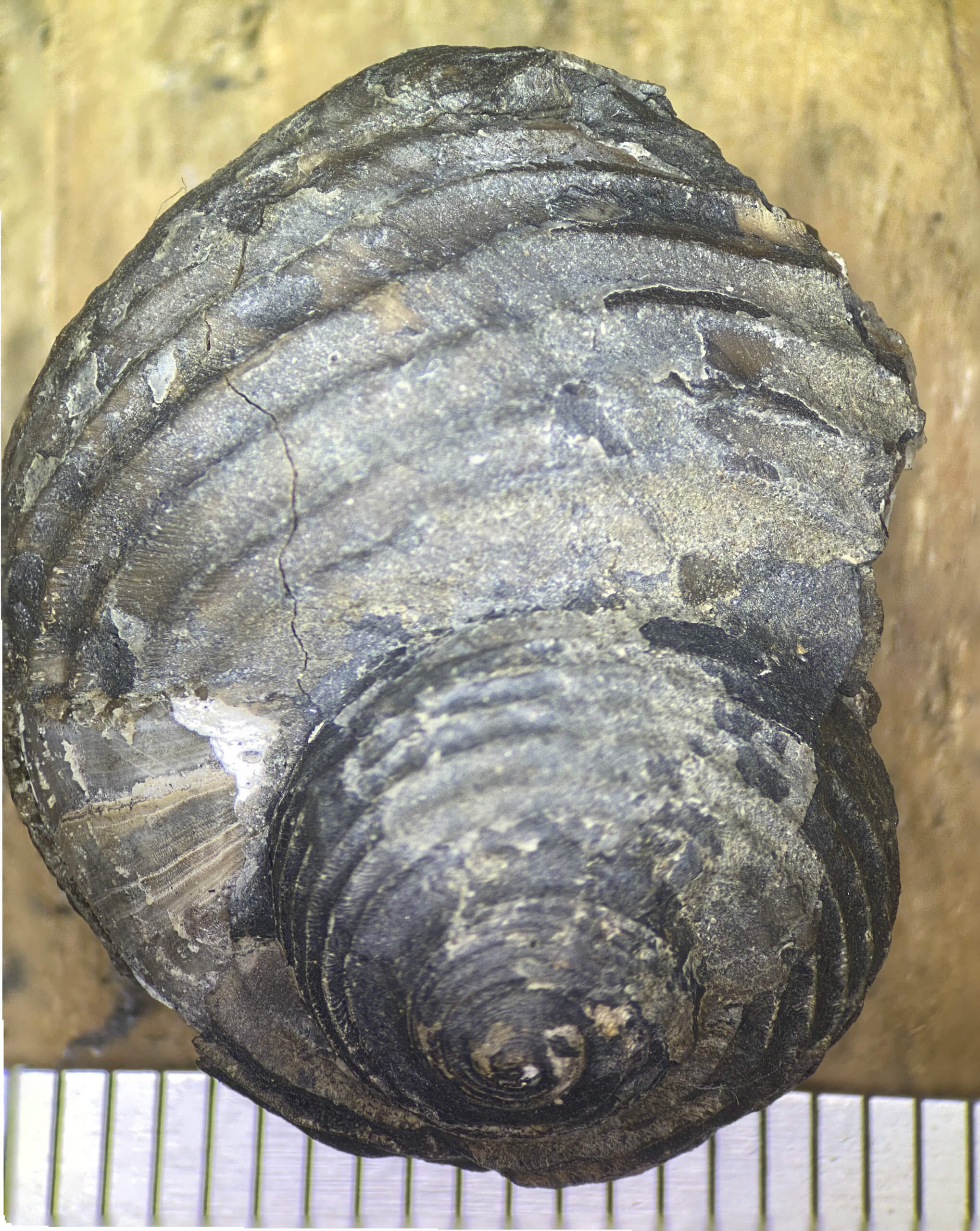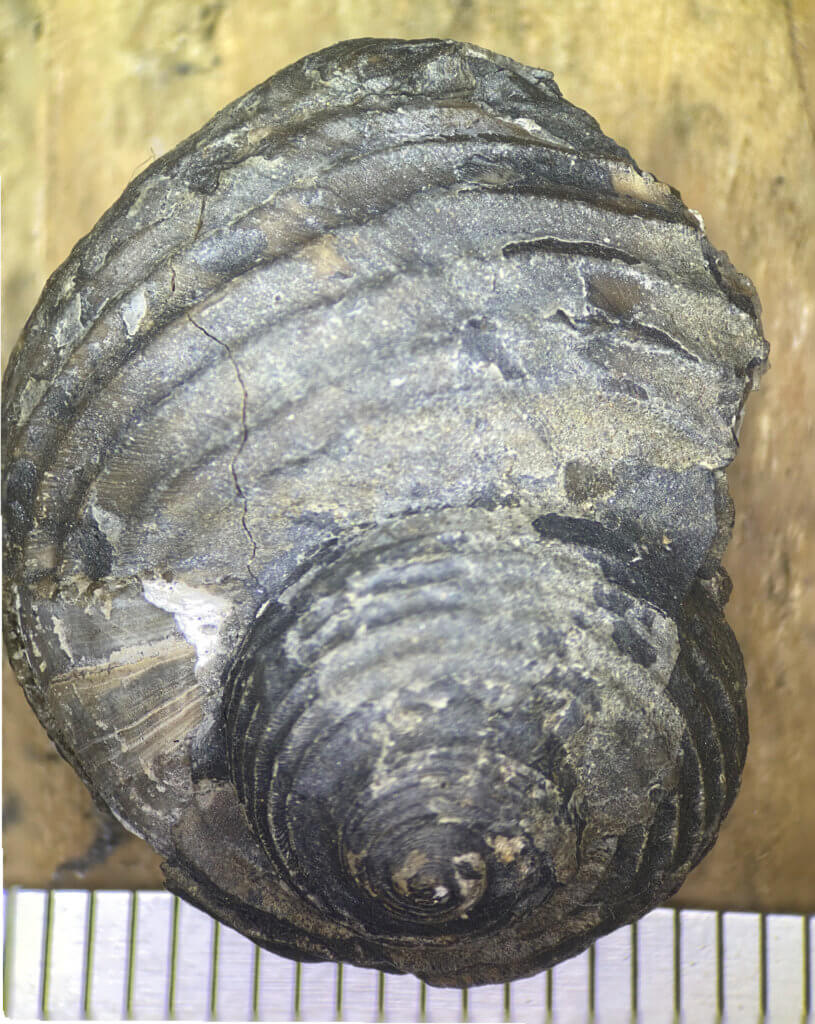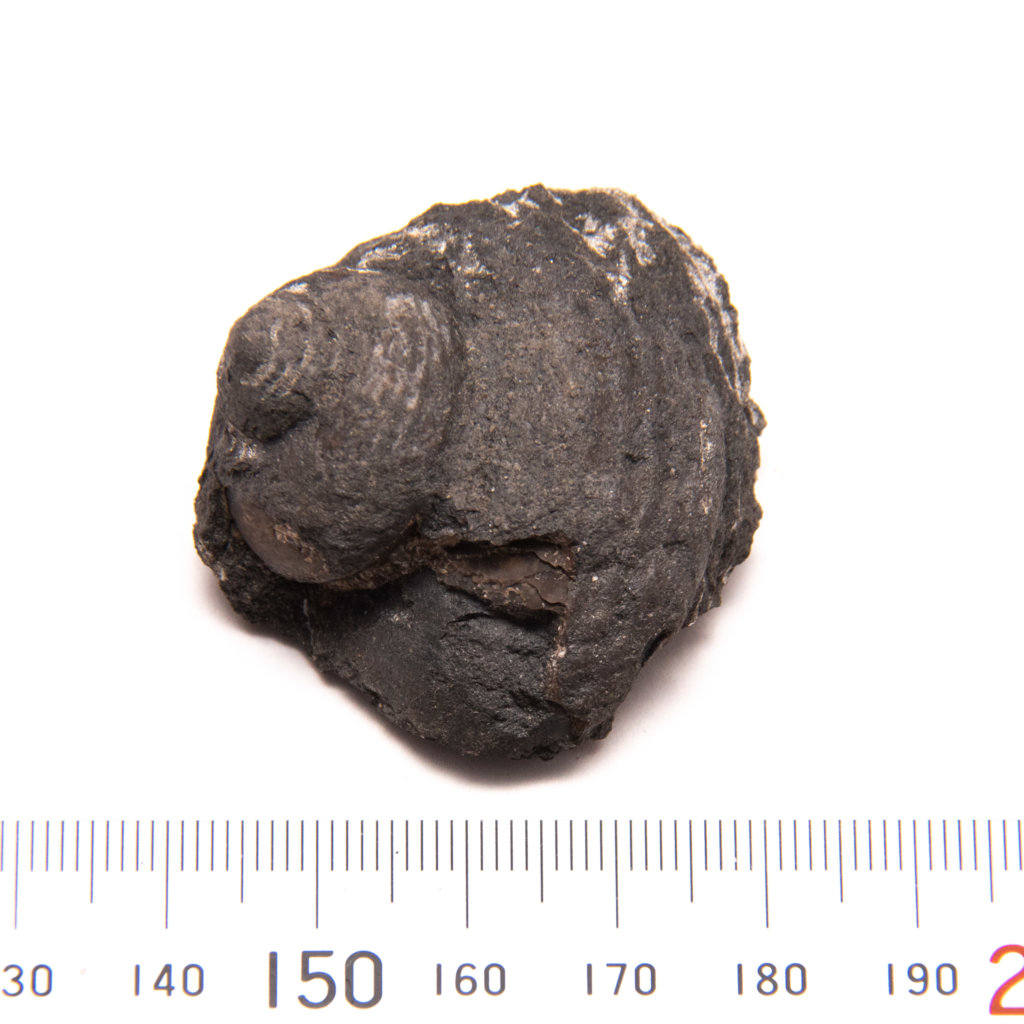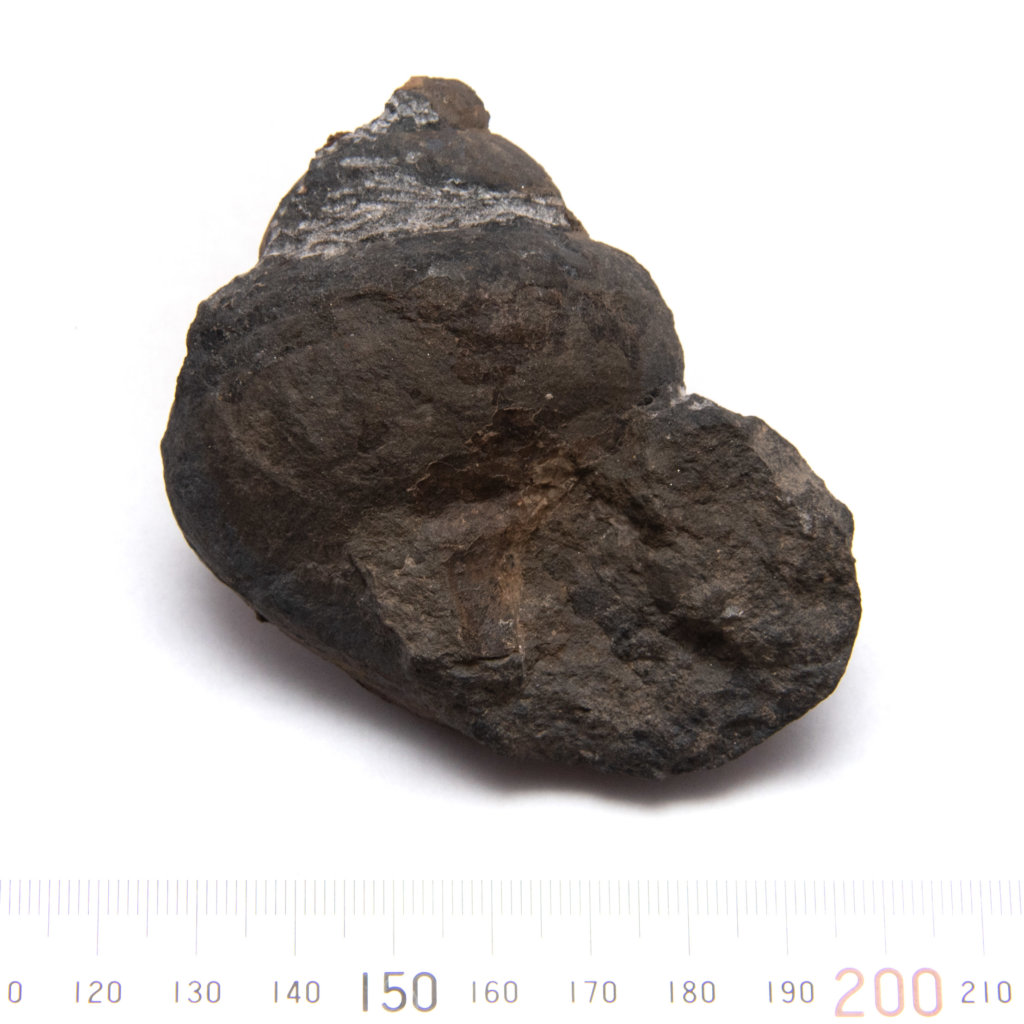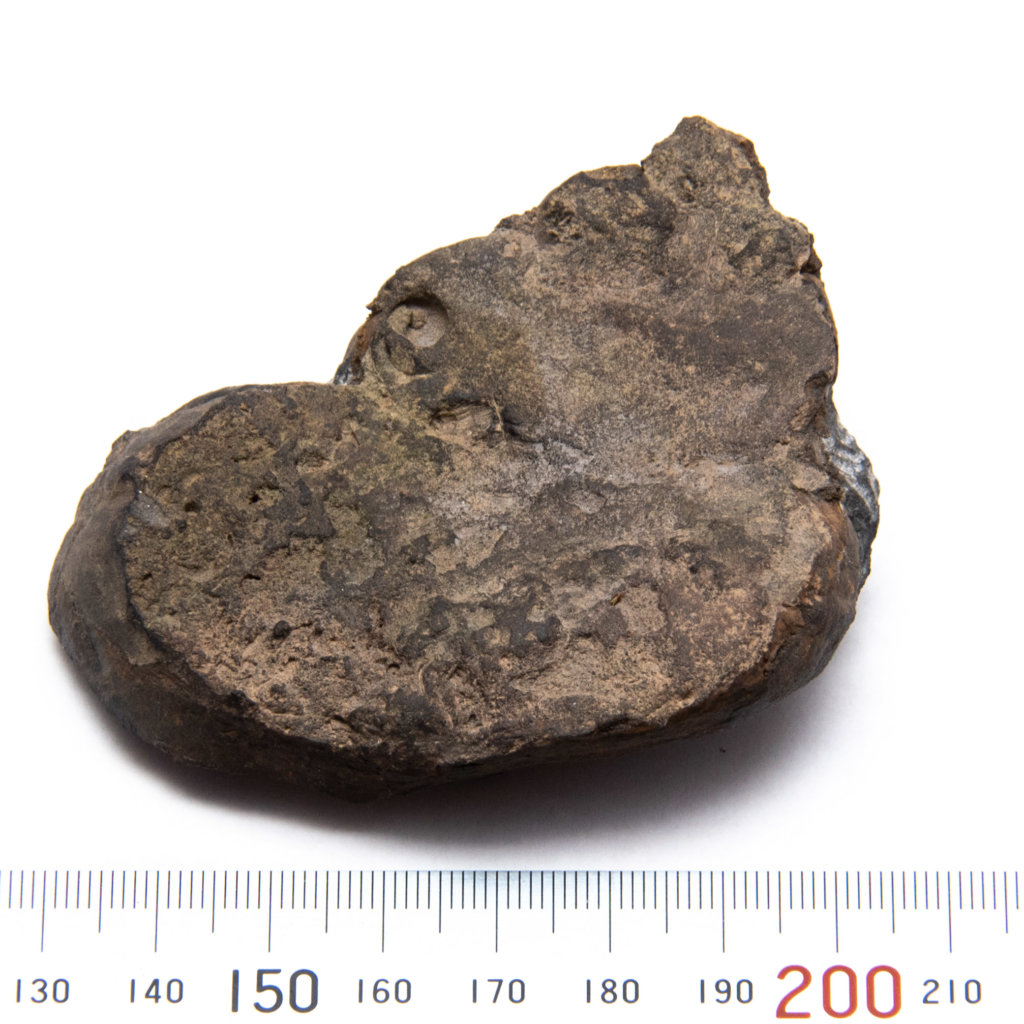This post is about particular specimens of Shansiella carbonaria. If you want to know more about the species, please read our research article Shansiella carbonaria. A comprehensive article about the origins of the genus with several plates and figures.
First described by Norwood and Pratten in 1855, Shansiella carbonaria is a very common fossil gastropod. The species existed from 306.95 to 295 million years ago. The genus Shansiella, first described by Yin in 1932, existed from 360.7 until 254 million years ago. Originally the species was named Pleurotomaria carbonaria. Later it moved to the newer genus Shansiella by Yin in 1932.


Specimen CG-0060 – This specimen is from the Ford City Pine Creek Limestone. These weather-out with beautiful shell patterns visible at that location. The shale/limestone layer they are embedded in is very fissile. Splitting this limestone is very easy. In comparison to the more cement-like Brush Creek limestone, this is an easy matrix to work.
In the photo above, the growth lines are visible on the right side. The aperture, or shell opening, is to the left.
Other Specimens of Shansiella carbonaria
See specimens of the genus Shansiella in the catalog.
Since finding my first specimen of S. carbonaria, I have been able to quickly recover more in both the Brush Creek and Pine Creek limestone stratum. Pine Creek specimens are often much more detailed, showing preserved shell material with nothing attached. The Brush Creek specimens can be tougher to recover. I’ve recovered a few steinkerns and at least one (CG-0142) with shell material in presentable preservation.
Specimen CG-0061
This is a larger example found at the same time as CG-0060. It was much larger and still attached to limestone, but not attached to the hillside, rather lying in the talus pile. It had a natural cleaved plane, from its fossilized position it the rock. I took my polishing tool and used it to smooth out the surface to show additional details. The shell thickness, ornamentation, and even a small spot of pyrite are visible on the polished side. While the shell surface appears lumpy, you can see the fine spiral pattern locked in limestone. The shell material fell off the top spiral, exposing the calcite steinkern. Found in Pine Creek limestone near Kittanning, PA.
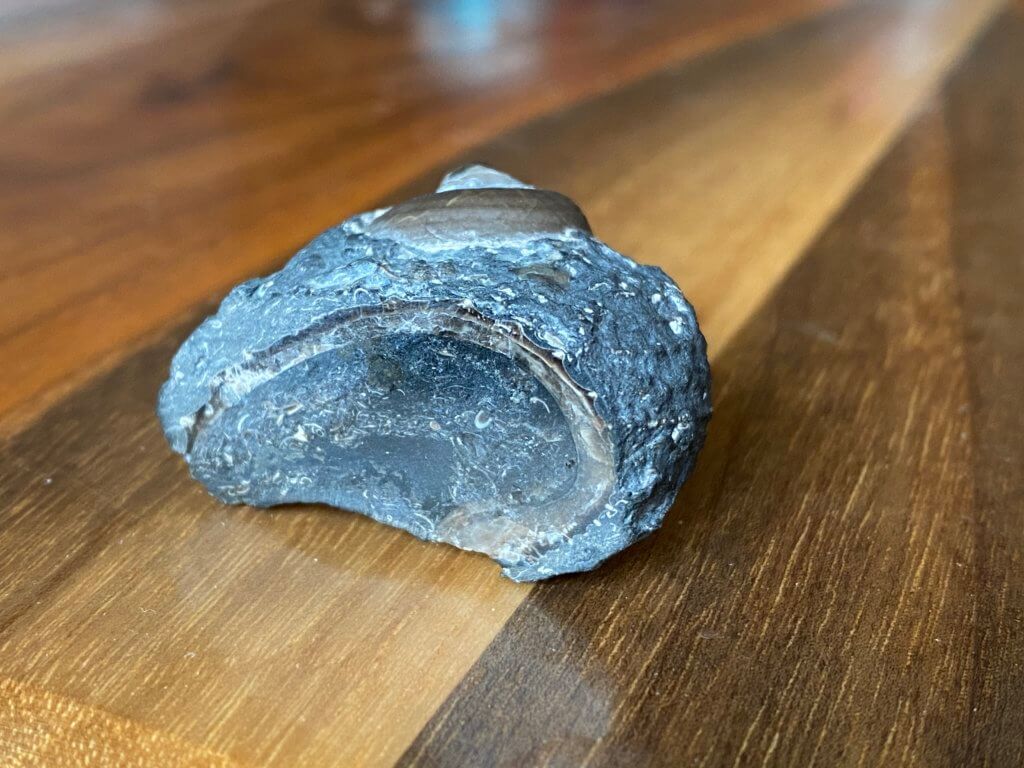
A different specimen with a polished cross-section. 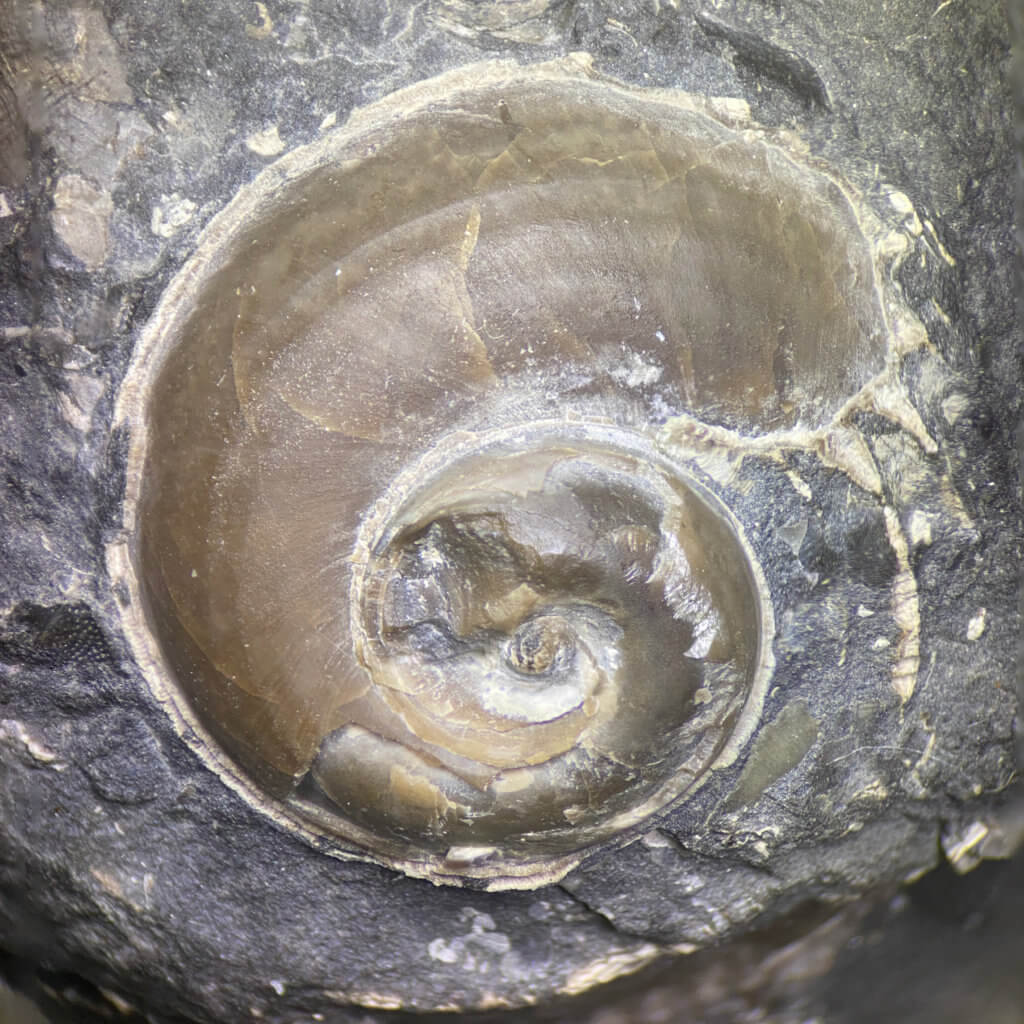
Spire view, with removed shell. 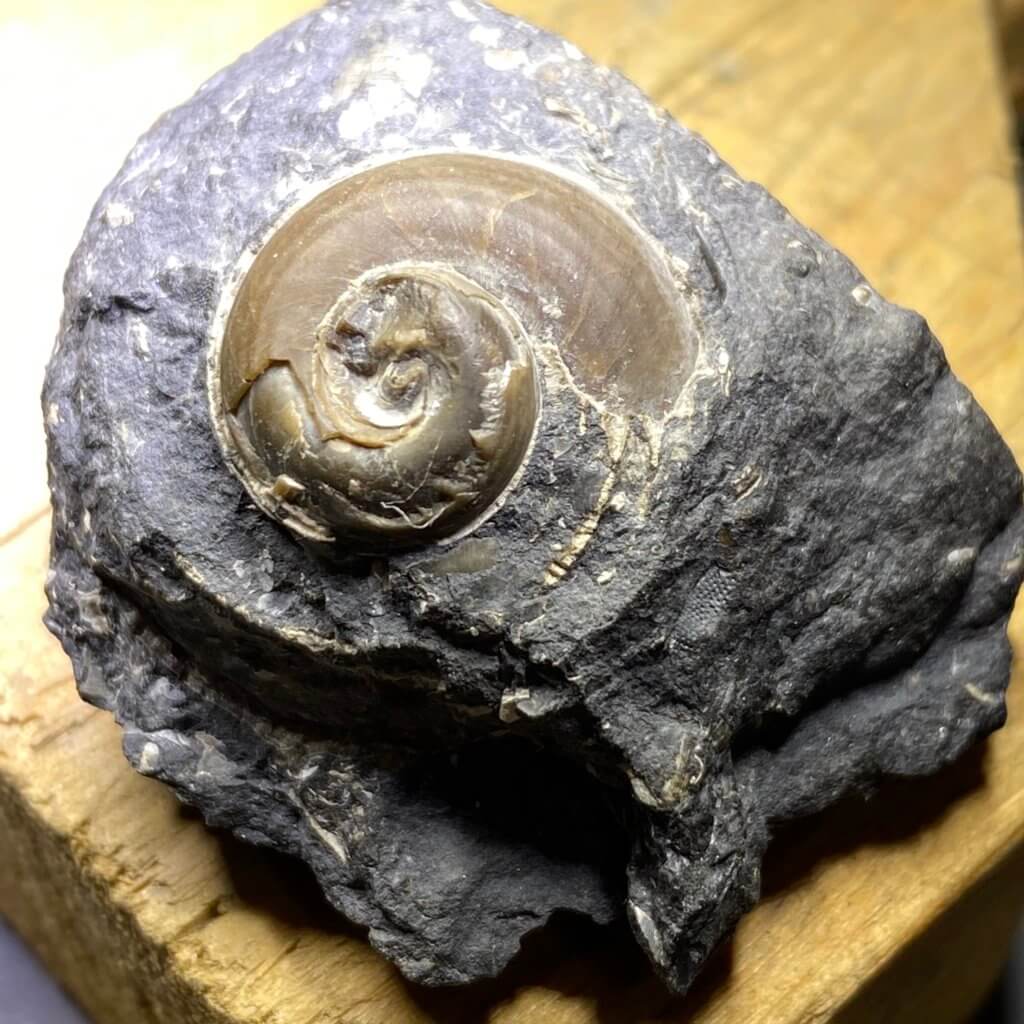

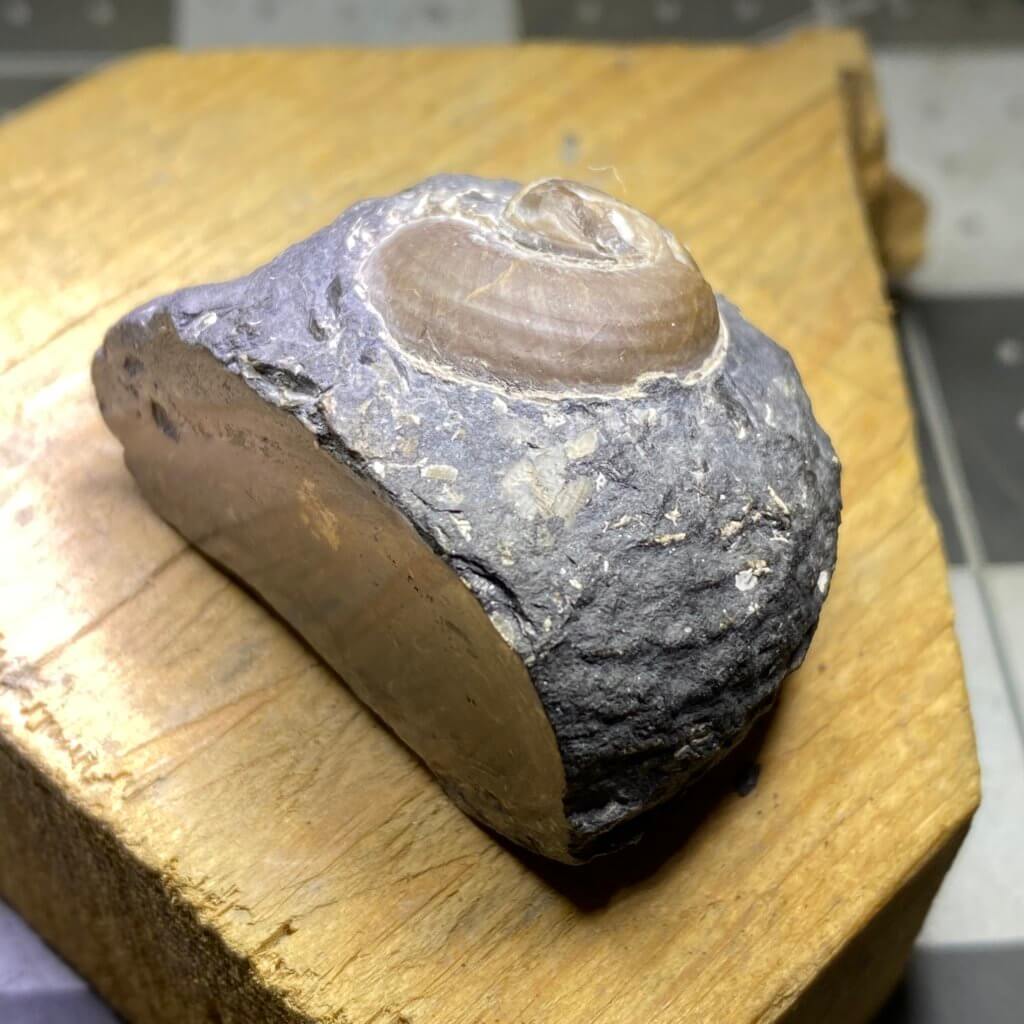
Polished side was naturally cleaved. There is a spot of probably pyrite within the polished section. 
Detail of shell ornamentation shown in polished section. The raised edges are known as spiral cords. The shell also appears thick here, near the bottom whorl.
Specimen CG-0142
Medium to Large sized conch with most of its shell material surviving. Three complete whorls ending with complete spire. General shell surface exposed, however not as good as specimens from the Pine Creek limestone. The specimen appears morphed after fossilization, crushing at an angle.
Specimen CG-0144
Large mostly steinkern of the conch, exposed at the top portion of a limestone boulder. There is a groove showing the selenizone. It appears that at least sixty-percent (60%) of the shell is eroded away. The aperture is apparent, however, it may not be the true opening. Recovered from float Brush Creek limestone boulder in Guffy Run.
This is larger than any specimen of S. carbonaria that I have recovered, and it brings doubt to its identification. It seems to be a pleurotomarian, as there is a selenizone impression in the bottom whorls. I had briefly considered Strobeus, but if it is truly a selenizone impression, this would rule that genus out.
Shansiella carbonaria on the web
More Resources
- Pine Creek Gastropods – A number of recovered gastropods from an earlier trip.
- Shansiella – The first recovered example from the Brush Creek limestone.

